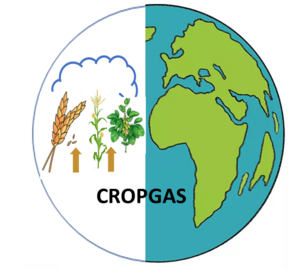CropGas
| Start: | 01 June 2022 (External Call project) |
| Duration: | 24 |
| Aim: | The effect of conservation agriculture interventions on greenhouse gas emissions |
| Contact: | Coordinator Dr. Laura Gardenas, Rothamsted Research Sustainable Soils and Grassland Systems Department, United Kingdom |
| Website: |

Agriculture must ensure food security for all, sustainably and in the face of climate change. There is concern about the impact of farming on soil quality (losses of structural stability, soil organic carbon, biological functions), and greenhouse gas (GHG) emissions. The most recent IPCC report (Working Group 3) identified agriculture and land use change as a comparable source of anthropogenic GHG to the energy sector, with considerable scope for mitigation.
Project partners
Country | Organization |
Ireland | University College Dublin |
Malawi | Lilongwe University of Agriculture & Natural Resources |
Poland | Fargo PW |
Poland | Poznan University of Life Sciences, Faculty of Agronomy, Horticulture and Bioengineering |
South Africa | University of the Free State |
United Kingdom | British Geological Survey |
United Kingdom | University of Nottingham |
Zambia | University of Zambia |
Zimbabwe | University of Zimbabwe |
Call text
Agriculture must ensure food security for all, sustainably and in the face of climate change. There is concern about the impact of farming on soil quality (losses of structural stability, soil organic carbon, biological functions), and greenhouse gas (GHG) emissions. The most recent IPCC report (Working Group 3) identified agriculture and land use change as a comparable source of anthropogenic GHG to the energy sector, with considerable scope for mitigation.
There is widespread interest in how conservation agriculture (CA) might increase the sustainability of cropping, ranging from intensive temperate systems in the global north to smallholder and subsistence production in the global south. In all, zero or minimum tillage (ZMT) is implemented to reduce the disruption of soil structure. The retention of organic residues, or other means to build soil organic carbon (SOC), and the diversification of cropping systems through rotations or intercropping are all components of CA.
While there is evidence that CA can increase the resilience of crop yields to climate variations and improve the structure of soils, the question of its impact on GHG budgets remains open. In particular, it is likely that different GHGs respond differently to changes in tillage practice and increase in SOC status, so a strong evidence base is needed to assess the trade-offs between components of the GHG budget under CA, and the net effect on global warming potential (GWP), given differences in the climate impact of different gases.
This project brings together researchers from Europe and sub-Saharan Africa (SSA) who have been active in CA and GHG research to make a substantive contribution to the evidence base for the impact of CA practices on GHG budgets for agricultural soils. The evidence will span both temperate European systems, and systems in SSA, including smallholder production.
We will use established experiments in the UK, Ireland, and Poland that include locally relevant ZMT and crop rotation interventions with conventional cultivation comparisons. Similarly, existing experiments in South Africa, Zambia, Zimbabwe and Malawi will be used. The last three sites are part of an existing network (CEPHaS, also including RR, BGS and UoN) designed to compare conventional management with ZMT and residue retention combined with other CA interventions.
We shall install state-of-the art field instrumentation to measure soil GHG emissions and soil variables for plots across the experimental sites. This will provide measurements at fine-scale temporal resolution. We shall develop robust methods for statistical analysis and train each of the experimental groups in their use. The results will allow us to evaluate how local environment and crop management affect the relative importance of CO2, CH4 and N2O in GHG emissions from soil, and whether adoption of CA mitigates the GWP of these emissions. Measurements of emissions will be appraised alongside crop yield and other sustainability metrics allowing the wider assessment of trade-offs in the systems. Where possible, data will be used to derive country specific emissions factors.
We shall evaluate the prediction of observed differences in our experimental treatments by process models, and in particular whether it is necessary to account explicitly for how the physical and biogeochemical processes controlling emissions are affected by soil structure, which we will quantify by x-ray computerized tomography. Practically this will show the level of detail required in predictive models. It will also help to identify the key processes in the management-soil interaction which determine GHG production.
To contextualise our analyses, we shall review the literature relating to GHG fluxes under CA and undertake a meta-analysis of reviewed studies. This will allow us to evaluate further the potential role of CA in mitigation strategies and assess various trade-offs in the system.